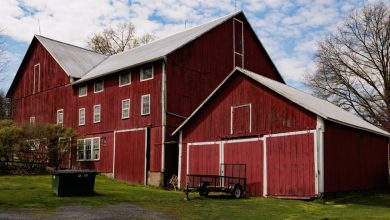California Slams San Francisco for ‘Egregious’ Barriers to Housing Construction

A scathing new report has found that it takes longer and costs more to build housing in San Francisco than anywhere else in California, exacerbating the state’s homelessness crisis and preventing many workers from being able to live in the city.
Gov. Gavin Newsom has demanded that cities approve far more construction as residents struggle to make ends meet and begin moving to other states in search of cheaper places to live. But some local governments still give housing opponents generous leeway to slow or block projects.
Governor Newsom’s housing division has determined that no city has put up more housing roadblocks than San Francisco, according to an investigation released on Wednesday. The report is the first of its kind, trying to compel San Francisco to do better, as well as show other municipalities what is necessary to create a thriving, equitable city.
“It is egregious, the enormous amount of constraints and barriers they impose on new housing development,” said Gustavo Velasquez, director of the state’s Department of Housing and Community Development. “The cost of housing is exorbitant because there isn’t enough of it.”
In San Francisco, city housing officials approve housing at a snail’s pace because they allow anyone to object, even if a project meets all of the city’s requirements. That means one cranky neighbor can drastically slow a project.
The city also allows far more environmental review — in some cases, quashing proposals because they would cast too many shadows — and gives the local Board of Supervisors far more say than in other jurisdictions.
The state, with the help of researchers at the University of California, Berkeley, found that it takes 523 days on average for a developer to get the initial go-ahead to construct a project. After that, it takes another 605 days on average to get building permits for specific installations such as plumbing and electrical hookups.
Even a proposed apartment building that meets all of the city’s rules and would be automatically approved in many California cities takes more than two years to get the green light in San Francisco.
The result is that many of the workers the city needs to function — including teachers, police officers and firefighters — cannot find places to live there and must venture far beyond San Francisco. In some cases, low-wage workers have resorted to living in their vehicles or on the street because the city has too little affordable housing.
“People who were born and raised in the city of San Francisco cannot afford to stay and raise their own families there,” Mr. Velasquez said.
In one glaring example of San Francisco’s slow approval process, the Board of Supervisors two years ago stalled 495 apartments on a lot used for valet parking by Nordstrom shoppers in the center of the city. Now, as construction costs have spiraled, the project is stuck because it no longer pencils out financially — and the Nordstrom store has closed.
The city has tried to fund housing for workers in some instances, but even its own projects have been waylaid. A teacher housing complex near Golden Gate Park that was funded by a previous mayor in 2017 is not expected to have its first tenant until next fall — seven years after the project began.
California officials say the state needs 2.5 million more units of housing to ensure that homeless people have roofs over their heads and that people of all income levels can afford places to live. It has assigned targets for how much housing each city needs to build and has threatened to withhold state funding if they fail.
The state has charged San Francisco with building 82,000 new units of housing by 2031, and the city adopted a plan in January to achieve that. But nine months later, San Francisco has already veered off track.
To fulfill its promise, the city would need to build more than 10,000 new homes each year, including 5,800 units priced affordably. That means it should be approving 27 units every day, but it is averaging less than one.
Mr. Velasquez said that a host of new state laws intended to accelerate housing construction hadn’t been enough to fully reshape how San Francisco builds housing — and that in some cases, the city was flouting state laws. For example, the city’s slow pace of approving building permits has prevented San Francisco from fully complying with a new state law intended to increase affordable housing.
Moira O’Neill, a research scientist at U.C. Berkeley, said she talked with scores of experts to write the new report and found that many developers and architects wouldn’t work in San Francisco anymore because the city’s arduous process has added so many delays, resulting in soaring costs.
Mayor London Breed said in a statement that she agreed “wholeheartedly” with the state’s conclusions and was pushing to change how the city handles approvals and amend local laws to make housing easier to build.
In the report, the state specifies 18 actions that the city must take. They include eliminating the right of any individual to thwart projects that comply with city rules and expediting the process of getting building permits once a project is signed off on.
If the city does not change its practices, the state could eventually withhold state funding and revoke local control over development in San Francisco.
The state could even allow developers to construct whatever they want — even, say, a skyscraper in a residential neighborhood — as long as enough of its units are priced affordably.
Ms. O’Neill said that San Francisco had progressive, inclusionary rules, such as strong tenant protections and wide swaths of land zoned for dense housing. But it also has housing practices that have resulted in a city that excludes middle- and lower-income workers.
“It’s a progressive city, but there’s this contradiction,” she said. “It’s really, really important to highlight not just for California, but for the country, how it’s possible to use procedural rules to be exclusive and block the ability to house people.”




